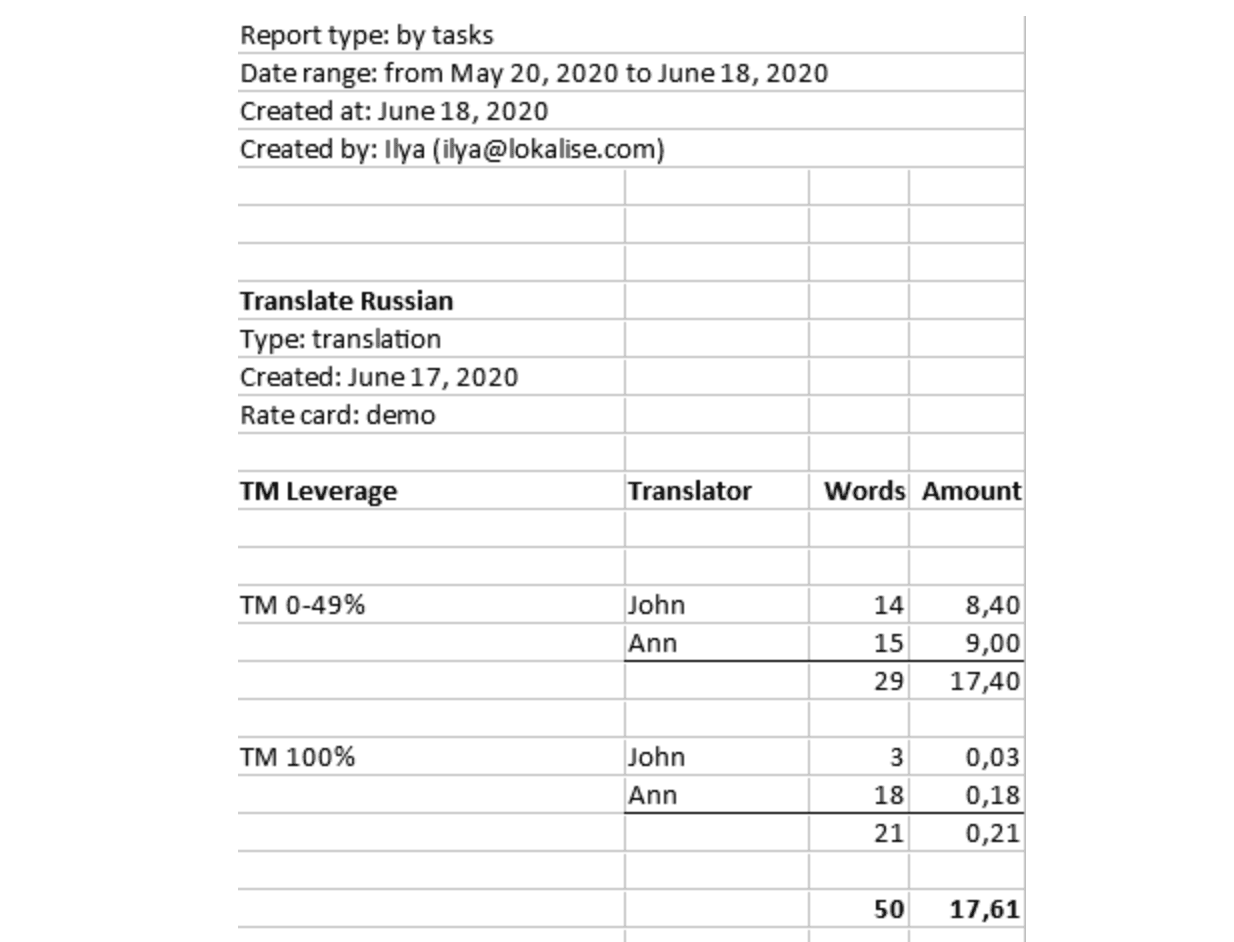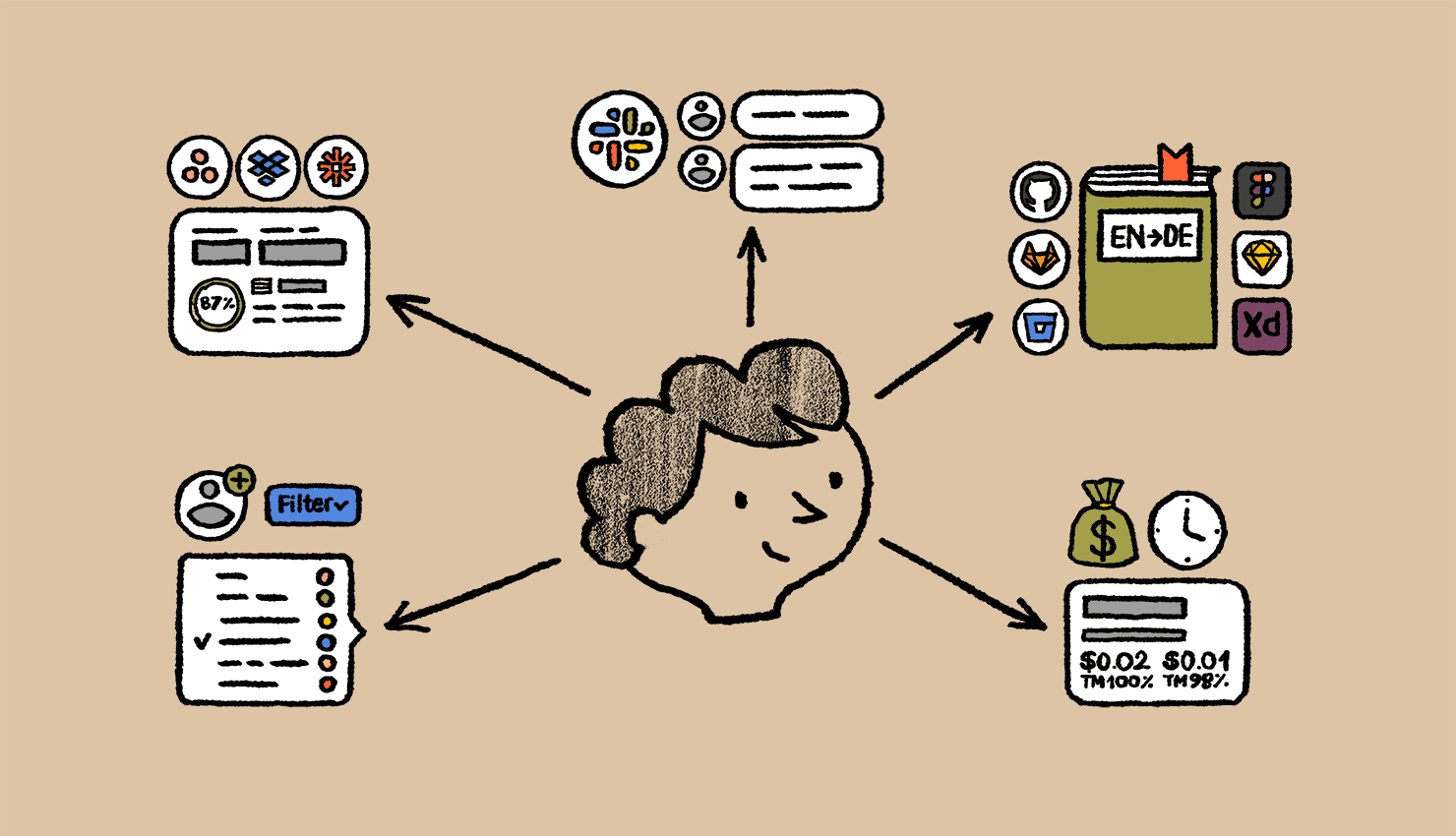1. Poor communication
For us, the main challenge was the volume of manual tasks and unfollowed projects. Managing projects in spreadsheets and emails was prone to error and it was easy to miss information or miss communications.
Carmen Avilés Suárez, Localization Manager, Agilent Technologies
Poor communication creates more work. Few things are as important as practicing structured, clear, centralized communication.
The smaller the company, group, or team, the fewer the opportunities for miscommunication. Now, think of all the contributors you have in your localization team. As the number of contributors increases, so does the risk of misunderstandings. This tends to be true regardless of whether you’re working with freelance translators, vendors, or in-house translators.
Adopting a centralized, collaborative platform creates a single source of truth for everyone participating in the localization process. Not only does it ensure that everyone is working from the same set of information, it also keeps everyone focused on the same priorities.
How Lokalise helps
With a TMS like Lokalise, you can structure and centralize communication and manage the entire localization process from a single dashboard, allowing you to:
- Integrate with Slack and email or Microsoft Teams via Zapier
- Communicate using the Slack-style project chat in Lokalise
- Comment on and automatically open discussions about specific keys
- End back-and-forth communications with your team in channels disconnected from the localization process
2. Inefficient systems
As a localization manager, sometimes I have the feeling that 20% of my time is asking for access to shared documents that co-workers keep secret for unknown reasons.
Eike-Marie Eiting, Localization Manager, Jimdo
Usually, localization workflows are managed using a patched-together system that is siloed and relies heavily on good old spreadsheets. It’s especially difficult to manage a growing group of people without integrated tools and data that flows into a single workspace.
So how do you efficiently plan workloads, track progress, and reduce the time spent on costly revision cycles?
How Lokalise helps
Avoid disconnected systems by syncing all relevant information to your translation management platform, for instance:
As a project manager, you need a tool that allows you to conveniently assign tasks and manage projects with full visibility of your team’s workloads. Lokalise’s audit logs allow you to see all the activity from your team. You can also get more granular information by filtering specific activities by date, team member, and event type. Plus, you can have a 360-degree overview of all your project data, like so:

Aside from making your life easier as a project manager, working on a dynamic collaboration platform can facilitate the process for everyone involved, speed up time to market, and contribute to the success of a project:
“Now that we’ve implemented a TMS, we have increased efficiencies and sped up our TAT (turnaround time) by 15-20%. My team can focus on tasks and projects rather than file management and other admin work,” says Carmen Avilés Suárez from Agilent Technologies.
A 5% increase in TAT can be significant; imagine increasing it by a whopping 20%. As Carmen points out, it starts with adopting the right tools to remove unnecessary processes and begin building streamlined workflows.
3. Streamlining workflows
Adopting a collaborative platform to manage localization workflows has meant eliminating many administrative tasks like preparing and manually uploading/sending out files, recruiting translators, issuing POs, etc.
Monica Citi, TMS Specialist, Inter Ikea
Small, repetitive, manual tasks not only end up eating up large chunks of time but can cost companies a considerable amount of money. Five employees spending an hour each on administrative tasks equates to five hours of wasted time every day. That’s where dedicated TMS tools can help.
Having a streamlined workflow involves a planned, consistent, repeatable set of activities. The more systems you have to manage, the higher the chance of it breaking.
As a project manager, you’re probably wondering: how can I make localization a predictable, scalable process? When communication, task-management, and file-sharing are spread out all over the place across different tools, none of the processes can be automated and scaled. This can be rather frustrating and time-consuming:
“To me, it's all about efficiency. You want to be working with a streamlined process that empowers people to do great work and be on top of the project workflow. Localization can be truly complex, especially if you are not working with the right tools,” says Marina Ilari, Video Game Localization Specialist | CEO, Terra Translations.
Learn more about workflow automation software and how they can improve your localization process.
How Lokalise helps
Here’s what the workflow looks like when using Lokalise:
- Create custom statuses to identify multiple review steps (e.g., copywriting review, subject matter expert review, regulatory review, internal quality checks, etc.)
- Add internal and external project contributors as team members
- Enable automated notifications for changes like translations being updated or reviewed, keys added or modified, tasks created or closed, and more
- Apply filters for new empty keys that require translation, and unverified keys, where the source has been updated and translations require updates
- Apply appropriate custom statuses to the filtered selection of keys using bulk action
- Create tasks from the filtered selection of keys
- Predefine review cycles creating chained tasks that will trigger once the previous one is completed
Now, the above example is a simplified workflow. It can be optimized further by building a layer of automation on top. If a company understands how to build processes and automate them, then magic can happen.
The obvious candidates to begin with when automating are repetitive, manual tasks like email/Slack notifications and QA checks. But the possibilities don’t end there.
You can build simple automated processes that are natural, fully integrated parts of your product releases and quality management systems to allow you to focus on:
“Strategy, performance, and speed of delivery, which means larger volumes of translations can be processed at the same time and into multiple languages with an increase in productivity,” says Monica Citi from Inter Ikea.
4. Assuring quality and version control
The quality of global content cannot be assured without everyone looking at the same source. I think that versioning is one of the biggest challenges we face in localization. Even once things are in translation, the English source will often still change. The use of a TMS will allow you to make changes more easily.
Mario Pluzny, Localization Manager, Tenable
When it comes to shipping localized products fast, the debate often focuses on speed versus quality. With the usual workflow that involves painfully reviewing translations manually using native speakers to review the translators’ work, this trade-off is real. But, what if you could increase speed while maintaining quality?
How Lokalise helps
With a single shared workspace built for agile workflows, you can increase efficiency while reducing translation costs and errors so you can launch faster. Here’s how update management and built-in quality assurance in Lokalise puts an end to micromanaging and manually detecting inconsistencies:
- Two-way syncing of content with code repositories, CMS, and design tools like Sketch, Figma, and Adobe XD leaves no room for any changes to remain unnoticed and keeps all the stakeholders (copywriters, designers, engineers, and product and marketing teams) perfectly aligned.
- Edits in the source automatically update the target translation status to “unverified” allowing easy selection of the correct scope for review.
- A duplicate finder lists all the identical translation values that appear across keys, files and platforms and significantly improves consistency and cost management.
- Glossaries allow you to keep terminology consistent across different content buckets.
- Translation memories support a coherent tone of voice that is important for strong brand messaging, but also relevant for keeping your translation costs down.
- Built-in quality assurance checks significantly improve the speed of late-stage software testing as they reduce redundant technical errors such as any in placeholders, numbers, and HTML tags, and help translators to focus on consistent translations.
- Rich visual context through Sketch, Figma, and Adobe XD integrations and the possibility to filter translation content by screenshot is another powerful way to support precise, meaningful, and consistent translations
All this is exactly how global companies like Revolut ship localized products in 30+ languages often and early while maintaining a consistent, authentic localized experience:
"In the case that some translation is not right, or any other update is necessary, the team can quickly jump on, make the necessary changes, and release the update with the over-the-air SDK."
5. Controlling the budget
Let’s face it. Translation, or localization, is a part of your company’s business. Sometimes you need to let go of the “highest” quality expectation and rely on a TMS that assists you in controlling the business side of it. Using a TMS directly affects your localization costs.
Yuka Nakasone, Globalization and Localization Director, Intento
What you care about most as a project manager is delivering content on time and within budget. Usually, the process of determining the budget for a localization project will involve calling translation agencies and consulting with other sources to get a solid grasp of costs. Once the budget is set, the next step is to control it tightly throughout the entire project by crunching the numbers in spreadsheets and requesting reports from contributors.
Aside from the manually intensive, repetitive work, the problem with this process is that it becomes incredibly difficult to control the budget as inevitable changes occur in the scope of the project. Mistakes are inescapable and you need to be able to manage stakeholder expectations regarding costs.
How Lokalise helps
To simplify this process, Lokalise has vendor rate profiles, which allow you to define specific rates for different vendors and provide varying rates based on language pairs and translation memory leverage. The set rates can then be used when adding each new task to the localization project to easily determine payments using reports.
If you work with a translation agency, you can create avatars for each of your vendors in Lokalise and add translators as members. You can then set rate cards to adjust rates for specific language pairs. Once you have this set up and tasks are completed you can access reports to see the exact amount of words translated and the costs.

Managing a localization project end to end doesn’t have to be a hassle
As a localization project manager who sees how all the projects are connected, you and your team members can directly benefit from using a central, collaborative platform for localization. In addition, changing the way you work can positively impact your company’s bottom line.
Curious to discover what 2000+ global companies see in Lokalise? We invite you to book a live demo with one of our product specialists to learn more about automation, workflow transparency, fast project delivery, and more.





